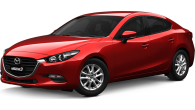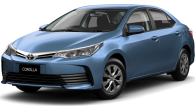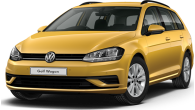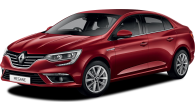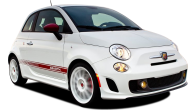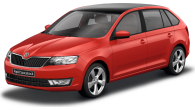Tim Robson reviews the new BMW i3 94Ah BEV with specs, fuel consumption and verdict.
The discussions around the place of the electric car in the modern motoring ecosystem are unlikely to abate any time soon.
MORE: Read the full BMW i3 2016 review
Some manufacturers have taken charge (get it?) and committed to a future with an electric element to it, and BMW is at the forefront of the movement.
New to the range is this, the i3 BEV 94Ah – and yes, that's its proper name. The '94' is the important bit; it refers to the capacity of the same-sized but more efficient Samsung-sourced battery array which increases the i3's range to a claimed 310km maximum, via the New European Driving Cycle (NEDC) standard.
The first i3 – which is still offered for sale - has a battery capacity of 60Ah and is 50kg lighter.
BMW, to its credit, says that the real world figure – a world where people use air conditioning and drive up hills – is actually closer to 200km.
So the i3 BEV is an all-electric car with a projected range of about 200km – and there's no way to extend it unless you're near a power point. Is Australia ready for such a dedicated EV?
BMW I3 2017: Hybrid
| Engine Type | Inline 2, 0.6L |
|---|---|
| Fuel Type | Unleaded Petrol/Electric |
| Fuel Efficiency | 0.0L/100km (combined) |
| Seating | 5 |
| Price From | $25,190 - $31,130 |
| Safety Rating |
|
Is there anything interesting about its design?
8 / 10
The hatchback-sized BMW is an... interesting looking car. It's relatively conservative in its shape, but get closer to the car and you realise you're looking at something quite unusual.
The devil is in the detail; the wheels are quite concept car-like, and the regenerative brake arrangement is visible through the spokes. There's also a smattering of 'look at me' electric blue to announce the car's intentions.
BMW has straddled the line perfectly between having something that's interesting and something that won't scare the straights.
It's aged pretty well in the couple of years it's been on sale, too. There was a real danger that BMW could have overemphasised the car's unusual nature; look at Toyota's fuel cell Mirai, for example.
The i3 is sufficiently different to attract the eye, but it's not so unusual that it makes it uncomfortable or awkward to drive - or to be seen in. BMW has straddled the line perfectly between having something that's interesting and something that won't scare the straights.
How practical is the space inside?
7 / 10
The bluff shape of the i3 lends itself to being quite roomy. There is quite a lot of headroom and sufficient leg and foot room for rear seat passengers, while an almost complete absence of a transmission tunnel gives the rear seat passengers an extra measure of space.
It's strictly a four-person car only. There are cup holders for the rear in the middle of the rear seats, and there are two cup holders line astern in the front of the car.
BMW is rightly proud of the alternate materials that are used in the BMW i3.
Again, the lack of a traditional transmission means there's a great deal of space for both driver and passenger, but the door sills of the carbon fibre reinforced plastic safety cell are very high when getting in and out of the car.
BMW is rightly proud of the alternate materials that are used in the BMW i3. The dash, for example, is made of a recycled natural fibre, but unfortunately, it ends up looking like the underside of a luggage cover in a cheaper car.
It's easy to see what BMW is doing, but in this instance - and particularly in contrast with the eucalyptus wood dash laminates - it just doesn't ring true. Luckily, other material finishes can be optioned to bring it into line with the rest of the cabin.
Probably the most unusual element of driving the i3 is the jog-shuttle style gear shift. Once you get your head around the idea that you twist your hand towards the driver to engage D and away to engage reverse, it's actually quite easy.
The steering wheel spoke, however, can hide the start/stop button and the awkwardly placed parking mode button. If you're not familiar with the car, it can be confusing.
The rest of the switch gear is familiar territory for BMW, and features a three mode drive select switch featuring Comfort (or normal), Eco Pro (which accentuates efficient driving) and Eco Pro+, which strives for maximum range by turning off climate control and limiting the car to 90km/h.
With a large glasshouse, the i3 is supremely easy to look out of, with large three-quarter glass and good visibility out of the smallish rear window.
The view through the steering wheel lands on a narrow, tablet-style instrument screen.
No visibility issues with the system and all its vital information, including a digital speedo, range, percentage of battery life left, how many kilowatts per hour, or kilowatt hours for 100 kilometres, you're using. It's a weird way to measure economy, but that's what you get when you run a proper EV.
There are two ISOFIX baby seat mounts in the back, and the rear seats do flip down to give you more cargo room, although the floor of the cargo area is raised quite high thanks to the electric motor in the rear of the car.
There is 260 litres of luggage space on offer with the seats up, and a practical and useful 1100 litres with the seats down.
When it comes to practicality of use, the EV has a fatal flaw – it's relatively inflexible. For example, I wanted to do a 90-minute round-trip before our photo shoot with the i3.
Vehicle charging infrastructure in Australia is in its absolute infancy, despite the decade that electric cars have been on sale.
If I had taken the i3, I would have depleted the battery to the point where we wouldn't get to our shoot, and there was no time to recharge between tasks. Result? I had to take another car.
This is the reality of an electric car owner's life in a nutshell. If you have a fixed route, say between home and work, and you can access a reasonably fast charging system, then the i3 - and all electric cars - work spectacularly well.
However, vehicle charging infrastructure in Australia is in its absolute infancy, despite the decade that electric cars have been on sale. In my hometown of 400,000 people, there are less than five commercial chargers, and not all of them work on any given day.
Does it represent good value for the price? What features does it come with?
7 / 10
The i3 94Ah BEV is $65,900 plus on-roads, and offers a BMW-esque level of standard kit presented in a reasonably familiar form. Automatic lights and wipers, satellite navigation, a four-speaker multimedia system with digital radio and Bluetooth and a rear view camera are all standard fitment, along with an interior trim that's made mostly of reclaimed or recycled material.
An almost complete absence of a transmission tunnel gives the rear seat passengers an extra measure of space.
As with most of BMW's range, though, the best kit is kept for the options packs, the best of which is the Innovations Package. For $2455, you'll get a 12-speaker stereo system, LED headlights, radar cruise with auto emergency braking and keyless entry.
The rims are 19-inch items, but are almost impossibly thin at 5.5 inches wide at the rear and five across the front. The run-flat tyres are an equally puny 155/70 and 175/60 front and rear; needless to say, you won't find them on the shelf at your local tyre store on a Saturday morning.
What are the key stats for the engine and transmission?
8 / 10
A liquid-cooled 360V electric motor (which is also used in the i8 sports car) resides under the boot of the i3, revs to 11,400rpm and produces all of its torque output of 250Nm in full from rest, before tapering off at about 6000rpm. Its power figure of 125kW peaks at around the same value.
It's directed through the rear wheel via a fixed-ratio single speed transmission.
How much fuel does it consume?
8 / 10
This particular test of the i3 was designed around the idea of the longer commute of 75km over varied terrain. In that guise, it is surprisingly practical, capably allowing me to cover the 150km round trip with an indicated 20 to 25km of charge to spare.
This equated to a dash-indicated average of 12.9kWh/100km, not far from the claimed 12.6 figure supplied by BMW.
The route includes about 400m of elevation change and about 40km of freeway, with the balance being urban and suburban roads, while I tried to drive each of the six journeys as I would in a petrol car.
However, if I were to stray from the parameters of that commute, then it's not so practical.
DC charging is not common, but it's nice to know that the car is ready for it.
Charging the i3's batteries from a regular 10amp home socket takes 14 hours to charge the car to just 80 per cent - which is simply too long. Adding BMW's Wallbox to your house lowers that time to eight hours.
Public chargers with a higher rating can reduce that time, again charging to 80 per cent, to four hours.
The i3 also has built-in DC charging ability, which increases the rate at which power can flow into the batteries by a factor of seven, reducing 80 per cent charge time to about 40 minutes. DC charging is not common, but it's nice to know that the car is ready for it.
It's a simple procedure to plug the recharger in, and the i3 lights up around the recharging port to tell you what state the charge is at.
Of course, you can simply pull into any brand of service station in a combustion engine car, and refuel your car much more quickly and conveniently.
BMW, along with other electric and electric hybrid manufacturers like Audi and Mercedes-Benz, has long lobbied the Australian government for assistance and for a way forward for electric cars, but the pleas are falling on the deaf ears of a constantly rotating government.
What's it like to drive?
7 / 10
The trick with any alternative style of vehicle is to make it as normal as possible to live with, and the i3 achieves that for the most part. The shifter is unusual, granted, and the strong regenerative braking effect – where the car slows by up to 80 per cent by just coming off the accelerator - can be quite off-putting for a new EV driver.
On the whole, the i3's biggest trick is the instant response from the electric engine. There is 150kW and 250Nm of torque, and they're both all available all the time. There are few other city runabouts that can come quite close to its level of pace in an urban environment.
The carbon fibre reinforced plastic chassis is built like a safety cell.
Once you're used to the braking, too, it's hard to go back. Simply lifting off the throttle brings the speed of the car down quickly, and you just apply the brakes right at the end of the stop to prevent the car from rolling any further.
The carbon fibre reinforced plastic chassis is built like a safety cell, and its suspension components are mounted to the very stiff structure. You can actually feel the articulation of the individual suspension components at each corner.
The ride, though, can be fidgety at times. We put that down to BMW's choice of tyres, the weight of which detracts from the ride. There is no space for a spare tyre of any sort, either.
Warranty & Safety Rating
What safety equipment is fitted? What safety rating?
8 / 10
There are six airbags aboard the i3, which, like the reversing camera and sensors are fitted as standard. The Innovations Package box needs to be ticked to get radar cruise control with auto emergency braking, however.
What does it cost to own? What warranty is offered?
7 / 10
The i3 is covered for three years and unlimited kilometres, while the battery array warranty runs to three years or 100,000km.
The i3's consumables are minimal; even the brake pads will last longer, thanks to the regenerative braking system.
Service intervals are suggested every two years or 25,000km, and prices are determined on a needs basis.
That said, the i3's consumables are minimal; even the brake pads will last longer, thanks to the regenerative braking system.
Verdict
The i3 is actually reasonably priced for what it is; a compact, stylish, unusual BMW product. Unfortunately, the pure electric car will be, for the foreseeable future, hamstrung by the lack of infrastructure... and a lack of interest at both a government and a corporate business level in providing said infrastructure.
The i3, unfortunately, will end up being an auto curio of the decade. Those who own one and get the best use out of it will absolutely love its style, the normalcy of the driving experience, the handling, and the practicality, but for everyone else, it's still two steps away from being a viable alternative to a fuel-powered machine.
Do you think the BMW i3 BEV is out of time and place? Tell us what you think in the comments below.
Click here for more BMW i3 pricing and spec info.
Range and Specs
| Vehicle | Specs | Price* |
|---|---|---|
| i3 94Ah | Electric, 1 SPEED AUTOMATIC | $25,520 - $31,570 |
| i3 94Ah Rex (Hybrid) | Electric, 1 SPEED AUTOMATIC | $28,490 - $34,320 |
| i3 Base | Electric, 1 SPEED AUTOMATIC | $23,100 - $28,490 |







.jpg)

